Tree-identification walk along English Bay
Trip Report by Nina Shoroplova. Photos by Nina Shoroplova and Caroline Penn.
The first time some members of Nature Vancouver joined Caroline Penn and me, Nina Shoroplova, on a tree-identification walk of the many trees along English Bay, we went from west to east. This time we met in front of the Vancouver Aquatic Centre and walked from Sunset Beach Park in the east, through English Bay Beach Park in the west, and ended in Alexandra Park, the one known as “a little park with big views” (https://covapp.vancouver.ca/parkfinder/parkdetail.aspx?inparkid=199).
First, outside the Vancouver Aquatic Centre, we used the Van Trees app (from the Apple Store) to ID the tall honeylocust growing on Beach Avenue. I was sure it would be a variety or a cultivar, because the regular species has clusters of vicious spines covering its trunk, each 6 cm to 10 cm long (2 in. to 4 in.). Sure enough, it was an Imperial honeylocust, a variety that is very popular for a street tree: Gleditsia triacanthos var. inermis.
Next we identified the trees growing in front of the Aquatic Centre. Here we are looking at a red Japanese maple, the one that has between five and seven long lobes arranged around a central “palm.” Like an open hand with the fingers outstretched. The leaves on this one were maroon, so it is a cultivar, probably Acer palmatum ‘Atropurpureum’.
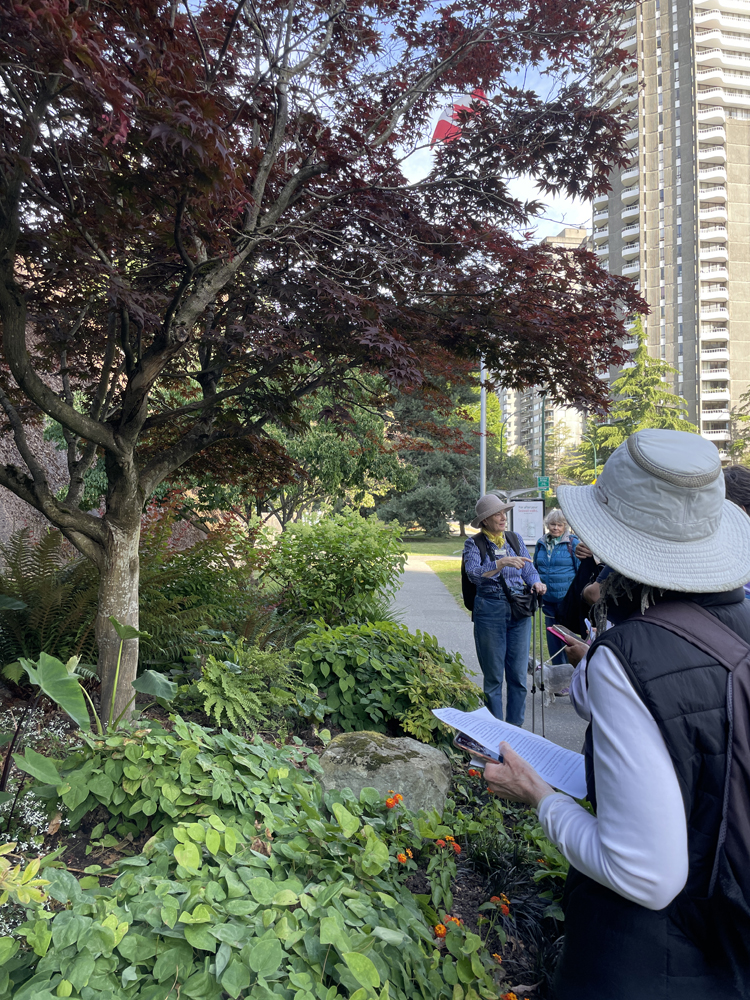
A number of tall pine trees grow on the north side of the Aquatic Centre toward the ocean. This one with twisted needles in bundles of two—in persistent papery fascicles—has two young seed cones pointing toward the trunk. The tree is the native shore pine, either it is Pinus contorta var. contorta, which although a shrub can grow fairly tall, or more likely it is lodgepole pine, Pinus contorta var. contorta, the taller of the two.
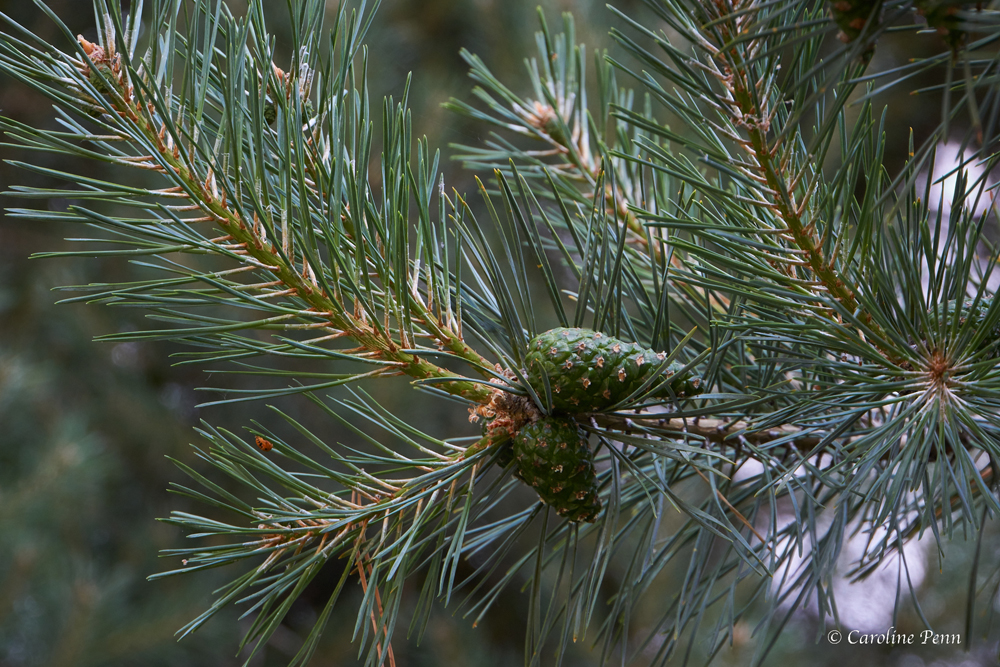
Near the old ferry terminal grows a Pacific madrone (Arbutus menziesii). This tree is one of my favourites, having such an interesting trunk, sporting reds and deep mahoganies and having strongly outward branches to occupy its space. Pacific madrone is a broadleaf evergreen tree, but this one had many yellow leaves on it. Too many? It turns out that this is the habit of this native tree that loves to grow by the ocean—to lose its old year’s leaves in the summer to make room for new young leaves. Here’s a picture of its fruit. They are presently green but will ripen to an orange colour that is close to red.
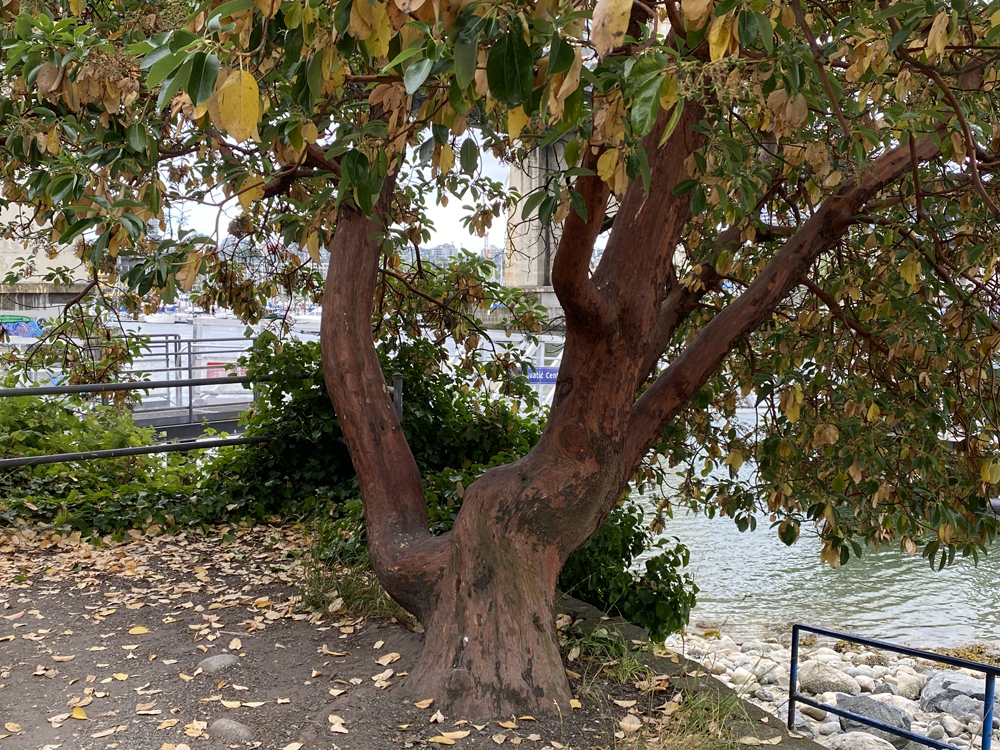
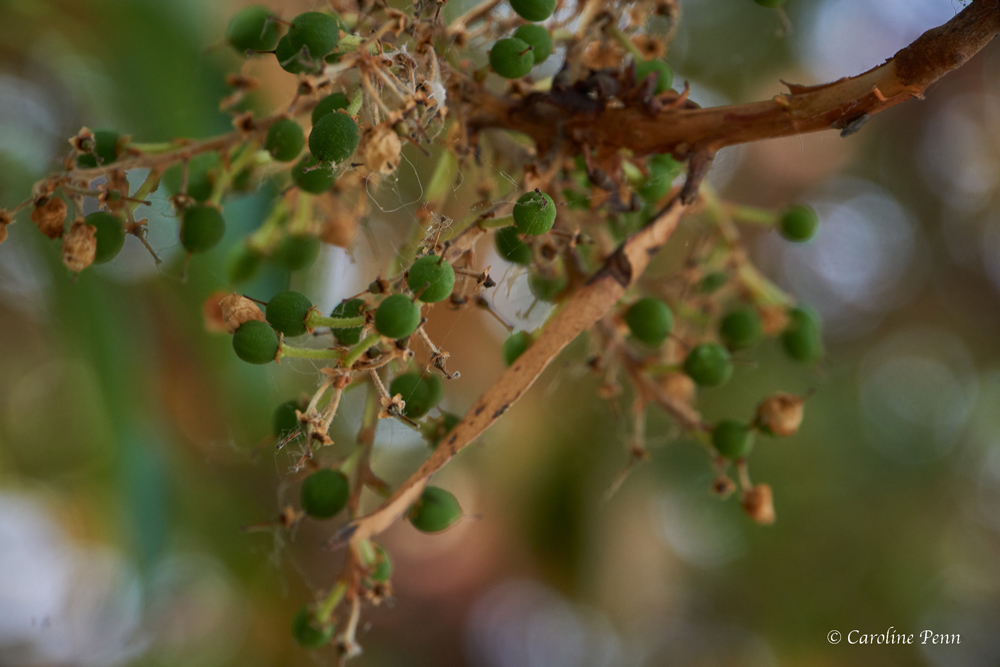
Here, we are looking at a black locust, with its ropy bark that is so easily recognizable and its compound leaves of mostly opposite leaflets (7 to 19 leaflets on one leaf). These are hardy trees in the pea, bean, and legume family, Fabaceae, growing fragrant hanging racemes of white flowers. The flowers are over and we didn’t spot any of the short seed pods. These trees grow very well despite poor soil conditions.
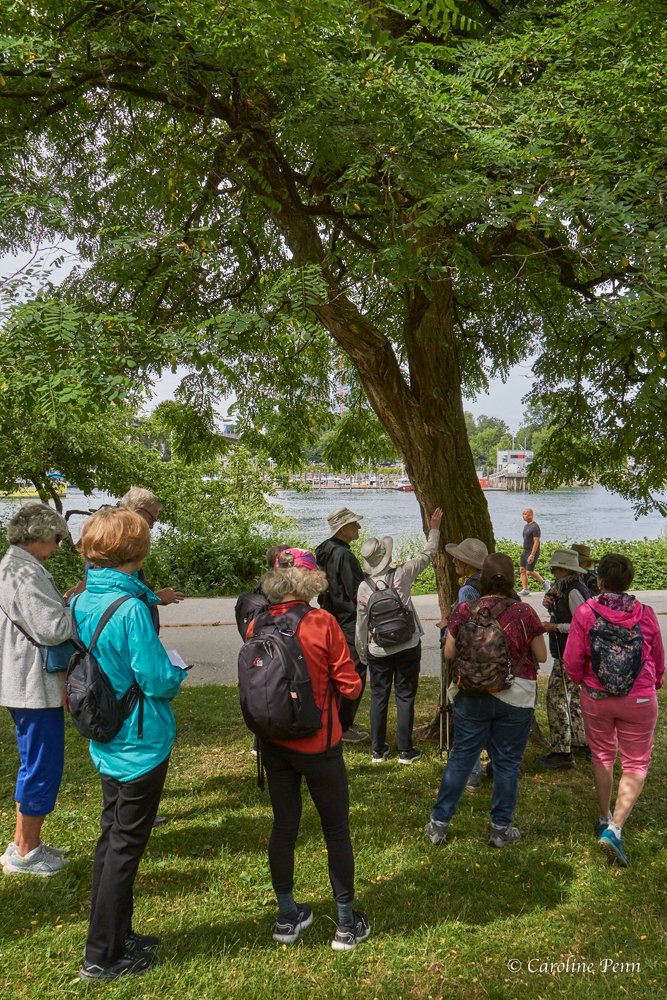
Another healthy tree specimen in Sunset Beach Park is the Persian ironwood (Parrotia persica). We couldn’t get too close because it was being protected from the crowds expected to hear the Vancouver Sympony Orchestra playing that Saturday evening. Luckily I had checked the trees along these parks the day before, when the Persian ironwood was being prepped (see the photo). And during our walk, the tall fences didn’t stop Caroline from taking a photo of the tree’s gorgeous wavy leaves.
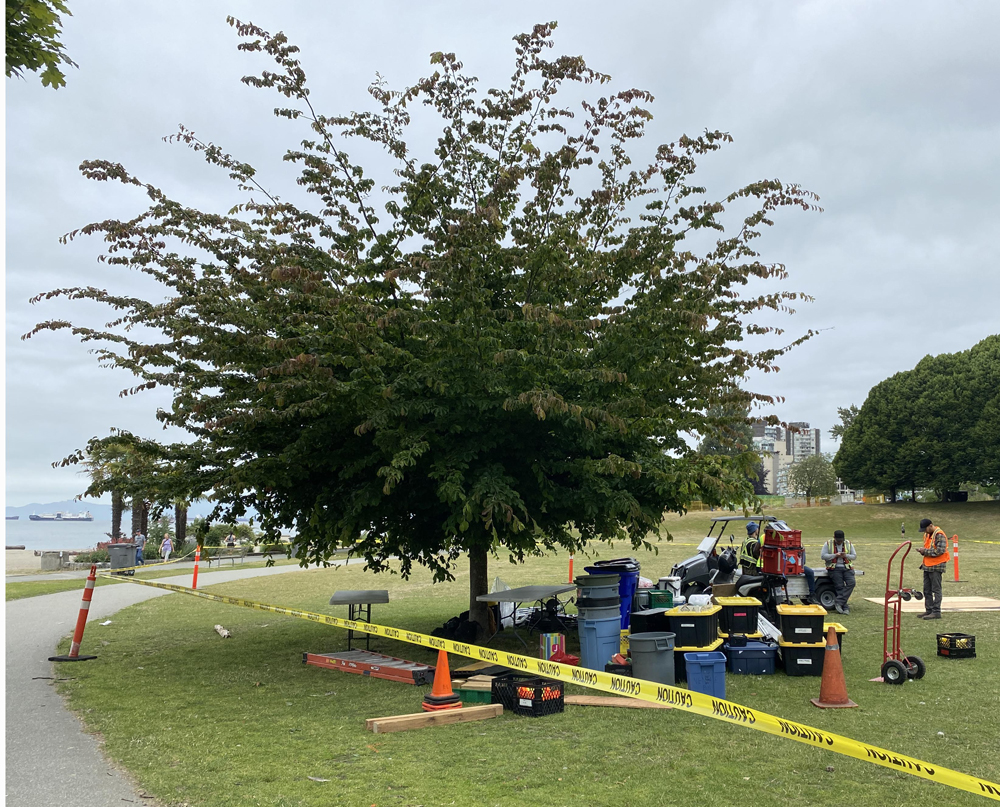
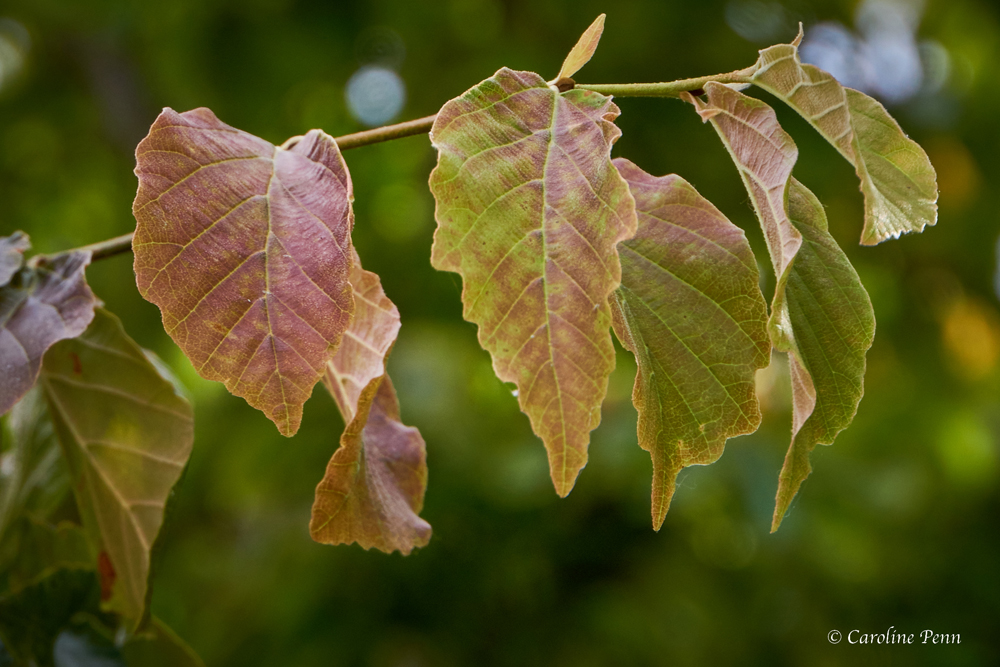
We walked through several groves of many tall trees—bigleaf maples, sycamore maples, a London plane tree, a purple beech, and a Lawson falsecypress.
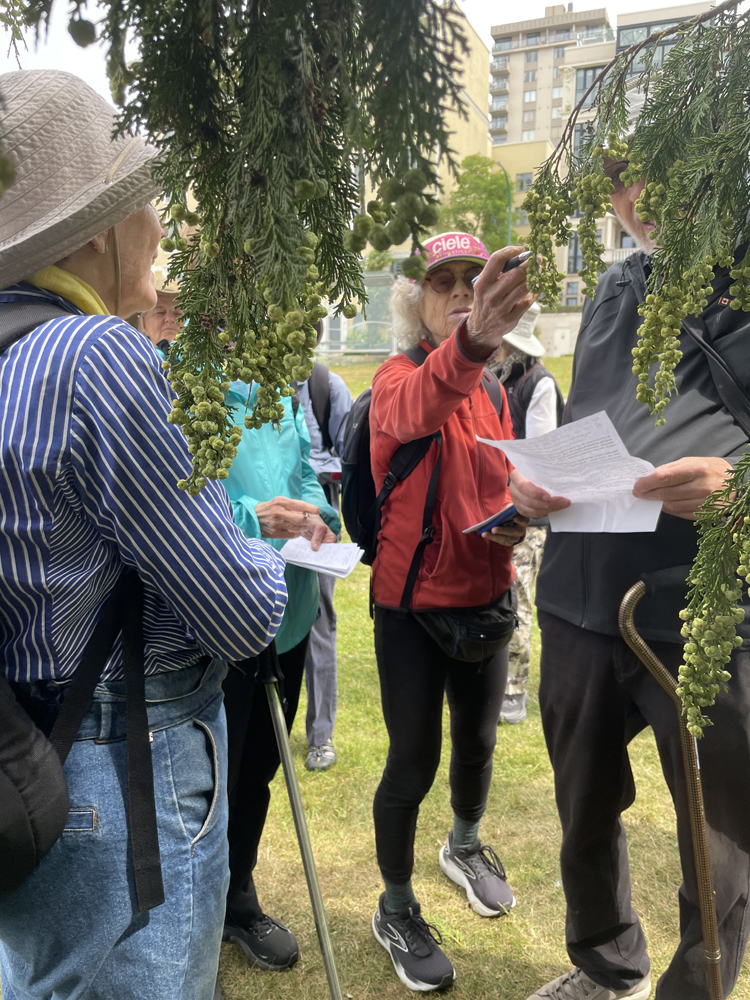
And we ended in Alexandra Park. This park began over a hundred years ago and the trees are magnificently large, from the red oak (Quercus rubra) (see its trunk) to the European beeches (Fagus sylvatica) (see another trunk and some leaves).
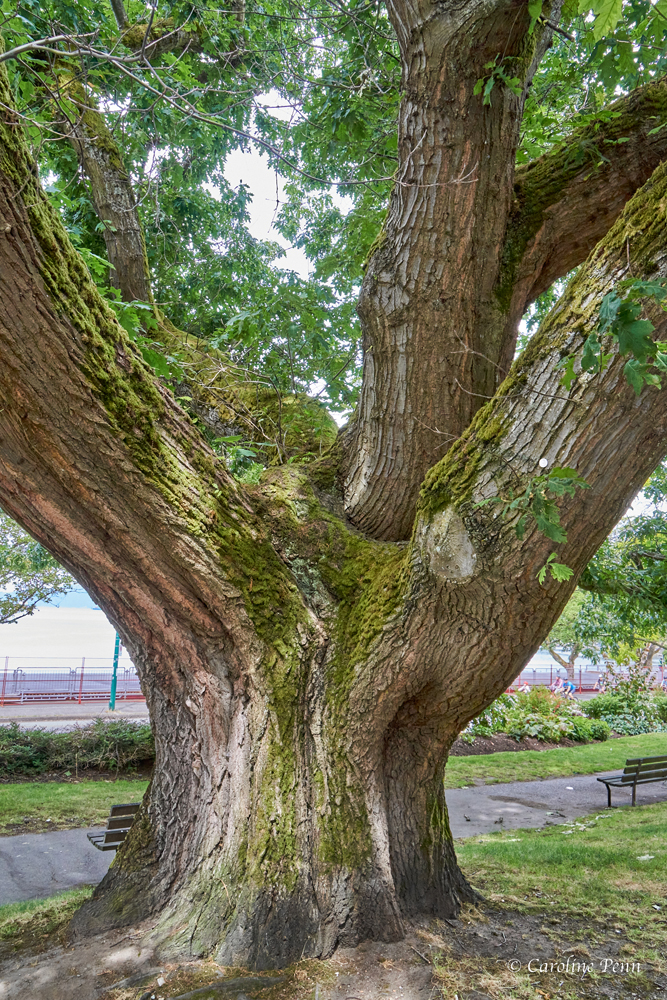
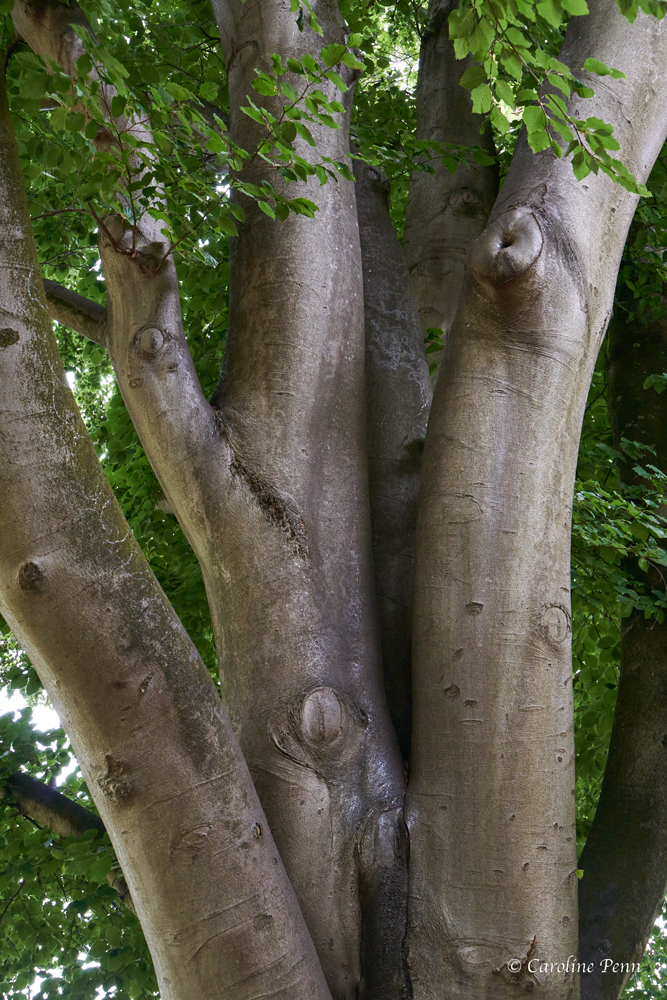
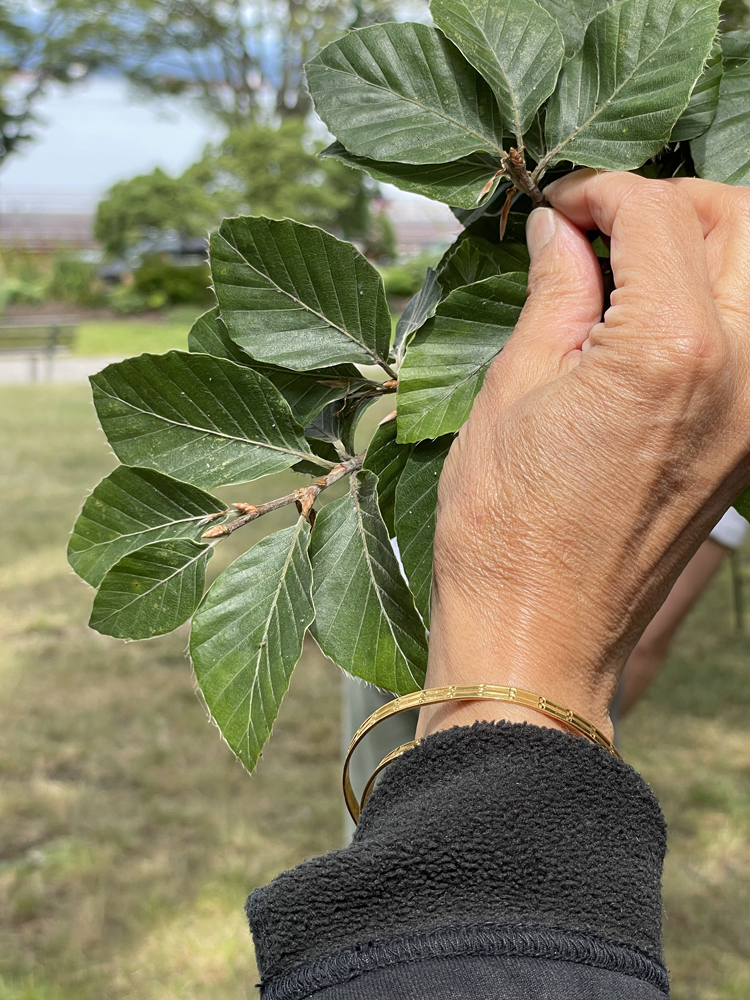
Thanks for joining us, everyone.